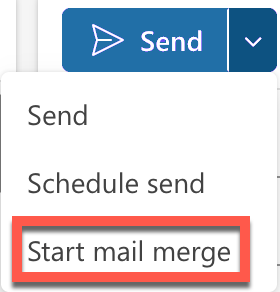I have a Zivver account
User manuals and reference documentation
Zivver Outlook Web Access Add-in - User manual
Introduction
This guide is intended as a reference. You don’t need to read it from start to finish to securely email with Zivver. Each chapter stands alone. This guide is written for using Zivver with the Microsoft Office 365 Outlook web version.
More information and instructional videos
This guide does not cover all topics. Visit the OWA section for more information.
Questions?
Contact your organization’s helpdesk.
Need more help? Send an email to support@zivver.com. The Zivver support team will be happy to assist you.
Welcome to Zivver!
Welcome to this guide for the Zivver add-in for Outlook Online (OWA)! This guide will show you how to securely send sensitive information directly from your trusted Outlook web environment.
The Challenge for Email Professionals
In your work, you will inevitably encounter sensitive information that needs to be sent via email. Whether it’s contracts, medical records, personal data, or even details about your colleagues, you need to handle this as securely as possible. Mistakes in sending such information can be costly or lead to non-compliance with data protection regulations. But there’s good news: security doesn’t have to be complicated!
How Zivver Helps You
You need to send secure emails without being a cybersecurity expert. Zivver makes this possible and easy! The software acts as a reliable guard in the background, scanning your emails for sensitive information and applying the right security measures. You can focus on your message, and Zivver takes care of security. Want a little more control? With just one click, you have access to all the settings for Secure mailing in Zivver.
How Does Zivver Work in Outlook Online?
Logging In
- Click the mail New email button.
- If you’re not already logged in, Zivver will log you in automatically.
- A pop-up window will appear and disappear once the login process is complete.
- You’ll stay logged in for the next 30 days, during which Zivver will continue securing your emails.
If you’re not automatically logged in to Zivver, follow these steps to log in manually:
- Select the Message tab.
- Click the Zivver icon
.
Tip
Zivver icon not visible?
If you don’t see the Zivver icon, click the grid_view Apps icon. You’ll find Zivver there. - Click .
- Depending on your organization’s settings, you’ll either be logged in automatically with your workplace credentials or prompted to enter your Zivver username and password.
Sending Secure Emails

- Start composing a new email as you normally would.
- If your email contains sensitive content, Zivver’s smart technology will detect it. Depending on your organization’s settings, Secure Mailing may be activated automatically, or you’ll see a notification that sensitive content has been found in the message.
- Want to send a secure email even if Zivver doesn’t enable it automatically? No problem! Simply click the Zivver icon
in the toolbar under the Message tab and click the next to the Secure Mailing option to turn Secure Mailing on .
Tip
Zivver icon not visible?
If you don’t see the Zivver icon, click the grid_view Enhance Outlook with apps icon. You’ll find Zivver there.
Extra Secure with Recipient Verification
Want to ensure that only the intended recipient opens your email? Use recipient verification. Depending on your organization’s settings, you can choose from three methods: SMS, a pre-agreed access code, or a verification email.
- SMS is the most secure and easiest, but it requires the recipient’s phone number.
- The access code is also secure, but you must share the code with the recipient in advance.
- The verification email offers a quick way to add an extra layer of security without additional steps, but it’s less secure than SMS and the access code.
Follow these steps to set up recipient verification:
- Click the Zivver icon
in your toolbar under the Message tab.
Tip
Zivver icon not visible?
If you don’t see the Zivver icon, click the grid_view Apps icon. You’ll find Zivver there. - Click
Recipient verification.
- Choose your preferred method.
- Enter the required details for the chosen method (e.g., a mobile phone number if you selected SMS).
Reading Secure Emails
Secure emails are stored safely on Zivver’s dedicated server, so you cannot view them directly in Outlook. Follow these steps to view a secure email:
- Open the received secure message.
- Click the Zivver icon
.
Tip
Zivver icon not visible?
If you don’t see the Zivver icon, click grid_view Apps. You’ll find the Zivver icon there. - You can now read the message in the Zivver side panel.
Read Receipt and Retracting Message
Curious if your secure email has been read? Follow these steps to find out.
- Go to send Sent Items.
- Open the sent message.
- Click the Zivver icon
at the top right.
The Zivver side panel will now open on the right side of the screen.Tip
Zivver icon not visible?
If you don’t see the Zivver icon, click grid_view Apps. If the icon still isn’t visible, first click the three dots more_horiz. - Click mail/drafts Read receipt.
Did something go wrong while composing the secure email? No worries! Follow these steps to retract the message.
- Go to send Sent Items.
- Open the sent message.
- Click the Zivver icon
at the top right.
The Zivver side panel will now open on the right side of the screen.Tip
Zivver icon not visible?
If you don’t see the Zivver icon, click grid_view Apps. If the icon still isn’t visible, first click the three dots more_horiz. - Click .
- Click
Revoke Access.
Note
Option not visible?
If an expiration date has already been set (e.g., by an organization setting), you will see the following message at the top of the message in a blue or orange bar:
Access to this message will be revoked for recipients/all, including you on<day_of_week> <date>, <time>.
In this case, use to adjust or cancel the expiration date. - Choose for whom the message will be revoked:
- Revoke for recipients: Access will be revoked only for the recipients. The sender retains access and can also restore it.
- Revoke for recipients and myself: Access will be revoked for everyone, including the sender. The sender will no longer have access to the message and cannot restore it.
- Set when you want to revoke the message:
- Revoke access in: You can set the period after which the message will be revoked. You can set the period in hours, days, or weeks.
- Revoke now: The message will be revoked as soon as you click .
- Review the summary that shows for whom and when the message will be revoked.
- Click or .
Depending on your choices, you will no longer have access to the message, or you will see at the top of the message that access has been revoked for the recipients, or you will see when access will be revoked and for whom.
